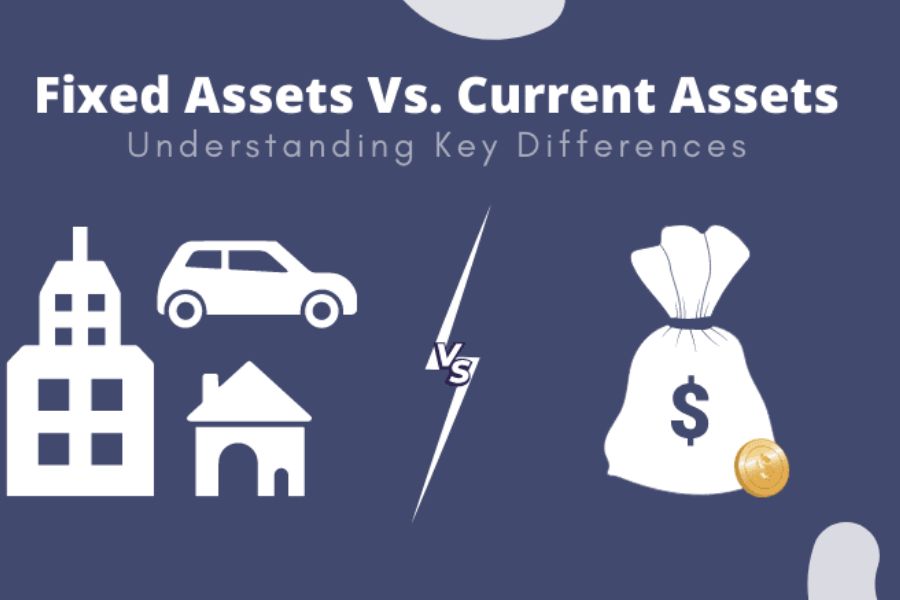How Do Fixed Asset Management Systems Reduce Depreciation Errors?

When it comes to financial accuracy and long-term planning, the devil is in the details—especially for businesses managing high volumes of fixed assets. Fixed asset depreciation errors can distort your financial reporting, overstate or understate taxable income, and even invite regulatory scrutiny. That’s where fixed asset management systems come in as indispensable tools.
At Renaissance Advisory, we help business owners streamline asset tracking and ensure they’re not leaving money on the table—or exposing themselves to unnecessary risk. In this blog, we’ll explore how fixed asset management systems work, why fixed asset depreciation is a key area of concern, and how implementing the right system can significantly reduce costly errors.
The High Stakes of Depreciation Mismanagement
Depreciation is a non-cash expense that reduces the book value of fixed assets over time. While it’s standard accounting practice, it becomes problematic when calculations are inaccurate. Common depreciation errors include:
- Using incorrect useful life estimates
- Misclassifying assets
- Missing assets that are disposed of or no longer in use
- Double counting assets
- Applying the wrong depreciation method
These errors can ripple through your financial statements, impacting your profit margins, tax liability, and overall business valuation. For businesses with dozens or hundreds of assets, managing this process manually—or with outdated spreadsheets—only compounds the risk.
What Are Fixed Asset Management Systems?
Fixed asset management systems are software tools designed to track, monitor, and report on a company’s physical assets throughout their lifecycle—from acquisition to disposal. These systems handle tasks like:
- Recording asset purchase details
- Assigning asset categories
- Scheduling and calculating depreciation
- Tracking maintenance and service history
- Generating reports for audits and compliance
By centralizing data and automating depreciation calculations, these systems reduce manual input and significantly minimize human error.
How Fixed Asset Management Systems Minimize Depreciation Errors
Let’s break down how these systems reduce specific types of depreciation errors and improve overall asset accuracy:
1. Automated Depreciation Schedules
One of the core features of asset management software is the automatic calculation of depreciation based on standardized accounting rules (GAAP, IFRS, MACRS, etc.). The software ensures:
- Correct depreciation methods are applied (straight-line, declining balance, etc.)
- Appropriate useful life estimates are used
- Depreciation starts and ends at the right time
With these functions automated, there’s much less room for user error or inconsistent application across departments or asset categories.
2. Real-Time Asset Tracking
Many depreciation errors stem from lost, retired, or misallocated assets that remain on the books. With barcode scanning, RFID tags, or GPS tracking, fixed asset management systems keep tabs on where assets are, who is using them, and whether they are still in service.
If an asset has been disposed of, sold, or moved, the system updates the asset record and stops further depreciation, reducing the chance of overstating expenses.
3. Standardized Asset Classification
Misclassification of assets—say, categorizing office furniture as IT equipment—can lead to applying the wrong depreciation rate or method. Fixed asset management systems enforce consistency through pre-set templates and category rules, ensuring every asset is properly classified from the start.
4. Audit Trail and Historical Records
Good systems maintain a detailed audit trail that tracks every change made to an asset record, including depreciation adjustments. This feature is especially helpful during audits or tax reviews and ensures transparency in how depreciation values were calculated over time.
At Renaissance Advisory, we emphasize audit readiness as a key benefit of digital asset management tools, especially for growing companies preparing for scale or investment.
5. Compliance With Tax Regulations
Depreciation rules differ depending on the jurisdiction and industry. Fixed asset management software is often updated to reflect changes in tax laws, such as new bonus depreciation incentives or limits under Section 179. Staying compliant with IRS regulations on fixed asset depreciation can help you avoid fines, penalties, or rework of tax filings.
Case Study: From Spreadsheet Chaos to Streamlined Accuracy
Consider a mid-sized manufacturing firm that came to Renaissance Advisory struggling with annual depreciation audits. With more than 800 fixed assets—ranging from heavy machinery to leased office equipment—they were relying on a patchwork of Excel files, emails, and memory.
After implementing a cloud-based fixed asset management system, they:
- Reduced depreciation misstatements by 95%
- Identified $120,000 in overstated expenses due to obsolete assets
- Accelerated their year-end close by 10 days
Not only did they gain financial accuracy, but they also unlocked insights for better capital planning and asset utilization.

Choosing the Right Fixed Asset Management System
Not all systems are created equal. When evaluating tools, look for:
- Scalability for future asset growth
- Customizable depreciation rules and schedules
- Integration with your accounting software (e.g., QuickBooks, NetSuite)
- Support for physical audits and asset tagging
- Cloud accessibility and data security
The team at Renaissance Advisory can guide you through selecting and implementing the system that best fits your industry, size, and financial goals.
Long-Term Benefits of Improved Depreciation Accuracy
Beyond avoiding financial errors, adopting a reliable asset management system pays off in several ways:
- Stronger Financial Reporting: Investors and stakeholders gain confidence in your numbers.
- Better Budgeting: Accurate depreciation allows for smarter capital expenditure planning.
- Audit Readiness: Documentation and reporting features ease the burden of audits.
- Regulatory Compliance: Stay aligned with local tax authorities and GAAP/IFRS rules.
- Tax Efficiency: Correctly applied depreciation can reduce taxable income legally and ethically.
Final Thoughts
Managing fixed assets isn’t just about keeping a list—it’s about maximizing value and minimizing risk. Fixed asset management systems provide the automation, accuracy, and visibility businesses need to get depreciation right the first time.
Whether you’re a growing enterprise or a long-established company, refining your fixed asset depreciation strategy with the right technology can yield measurable financial and operational benefits.
At Renaissance Advisory, we specialize in helping businesses optimize their back-office systems, from fixed assets to tax incentives and beyond. If you’re ready to reduce depreciation errors and gain clarity into your asset portfolio, let’s talk.
Need Help Upgrading Your Fixed Asset Management Process?
Contact Renaissance Advisory today to schedule a free consultation. Let us help you transition from manual spreadsheets to automated asset management with confidence.



